Back to
School
Remeber the old blackboard in your classroom ? That blackboard
was actually made of rock; a particular type of rock: SLATE. Well,
sit down at your desk and let's learn something more about this old
rock.


The Slate
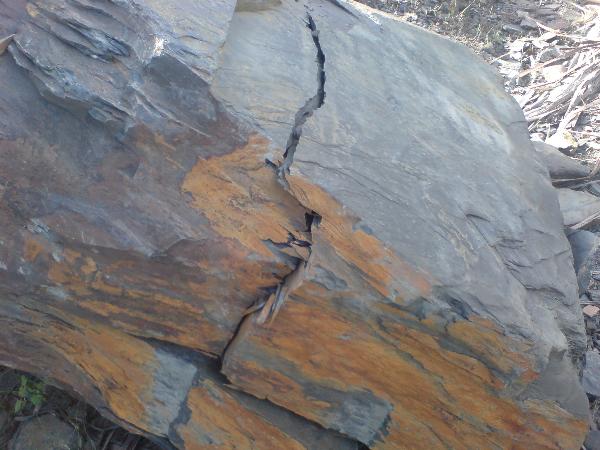 Originating from clay or volcanic ash, slate it is one of the
hardest rocks known to man. It is composed of several very thin
plates that are all parallel and which can be divided easily. This
characteristic is called cleavage. Homogeneous in appearance, it is
only possible to distinguish the minerals with the aid of the
microscope. Slate is mainly composed of quartz and muscovite or
illite, often along with biotite, chlorite, hematite, and pyrite
and, less frequently, apatite, graphite, kaolin, magnetite,
tourmaline, or zircon as well as feldspar. The rock absorbs only 1%
of its weight in moisture and does not change on contact with
acids.
Originating from clay or volcanic ash, slate it is one of the
hardest rocks known to man. It is composed of several very thin
plates that are all parallel and which can be divided easily. This
characteristic is called cleavage. Homogeneous in appearance, it is
only possible to distinguish the minerals with the aid of the
microscope. Slate is mainly composed of quartz and muscovite or
illite, often along with biotite, chlorite, hematite, and pyrite
and, less frequently, apatite, graphite, kaolin, magnetite,
tourmaline, or zircon as well as feldspar. The rock absorbs only 1%
of its weight in moisture and does not change on contact with
acids.
The
Extraction
The Valongo area consists of a large geological structure that
is usually designated as the Valongo Anticline. It comprises an
asymmetric anticline orientated NW-SE with its axis plunging 5 to
15º to the NW and the axial plane dipping 60º to the NE.The rocks
that make up the Anticline range from the Precambrian and/or to the
Cambrian up until the Devonian. To the west outcrop the
Carboniferous formations. The slate quarries in this region are
located in a band along the eastern flank of the Valongo Anticline
and date from the Middle Ordovician (ca. 464 M.a).The Ordovician
period is one where significant climatic alterations took place.
There is reason to suspect that some of the metasediments of this
age bracket were transported and deposited by glaciers and icebergs
originating in a ice mass that covered the north of Africa.The
Ordovician starts out as a discontinuous basal conglomerate that
marks the beginning of a transgression. This conglomerate is
followed by massive quartzites (Arenigian in age – Lower
Ordovician) that form the two crests of the anticlinal structure.
These are followed by levels of greywackes and metapelites both
dark and light in colour
The industrial extraction of slate at Valongo, near Porto,
started in 1865. Currently, the slate is extracted from the quarry
(open-pit mine) that, after well inspected, is chosen and sent to
get cleaved, sawn and softened. All the work of extraction and
processing was done with the aid of steam engines.
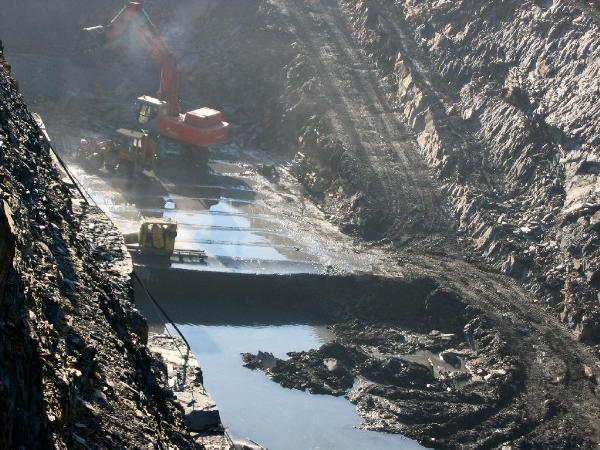

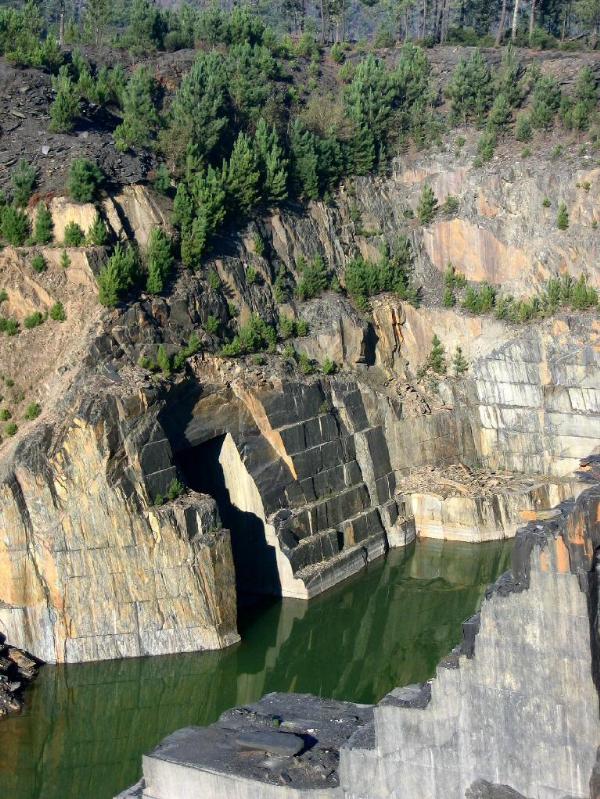
The Use
As a good water insulator -slate is widely used in house
construction, mainly for roof shingles. Slate has two preferential
orientations of break: cleavage and grain. This makes it possible
to split slate into thin sheets. When broken, slate maintains
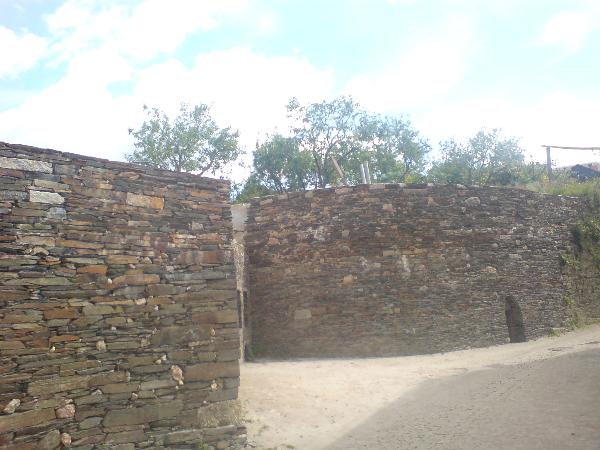
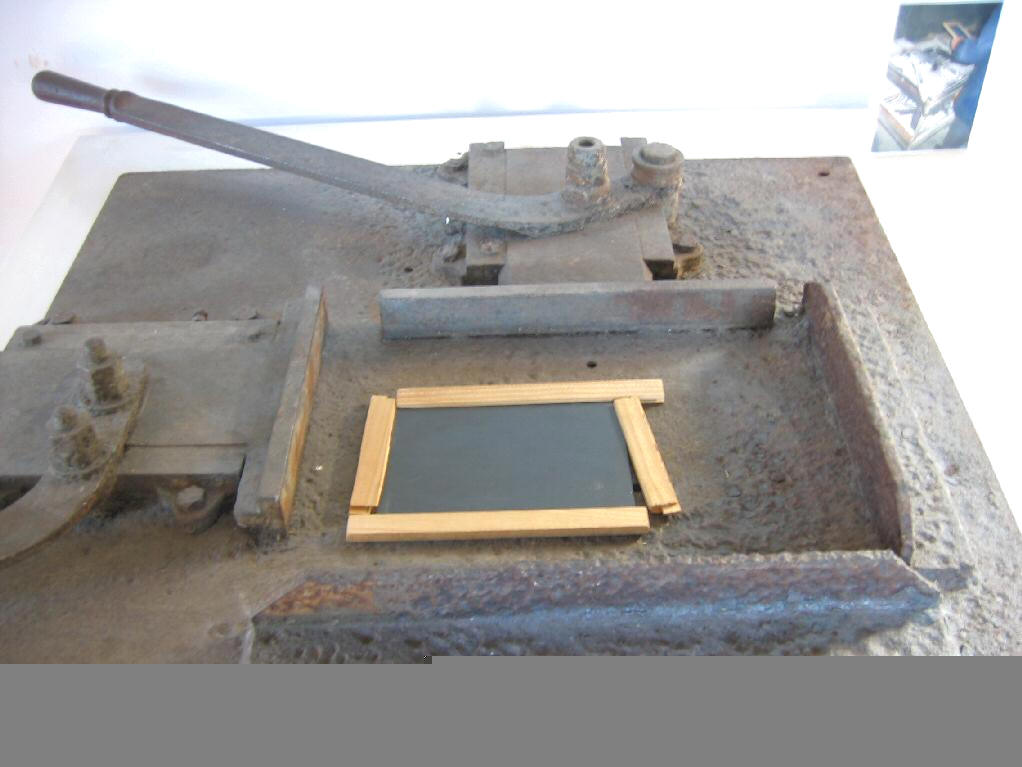 its natural appearance
while remaining relatively flat and can be easily stacked.
its natural appearance
while remaining relatively flat and can be easily stacked.
Because it is a good electrical insulator and fireproof, it was
used to construct early 20th century electric switchboards and
relay controls for large electric motors. Fine slate can also be
used as a whetstone to hone knives. Due to its thermal stability
and chemical inertness, slate has been used for laboratory bench
tops. In the 18th and 19th century schools, slate was extensively
used for blackboards and individual writing slates for which slate
or chalk pencils were used.
Where slate of fine quality is available it is used for gravestones
and commemorative tablets and by artists in various genre.
The
EarthCache
To claim this earthcache you must go and see
for your self the slates and its quarrying. You can also visit the
museum (refer to waypoint below). Send to me the answers for the
following questions after visiting the published coordinates:
1. The slate is usually black or dark gray due to the presence of a
quality carbon or of a specific mineral. - Which mineral is
that?
2. At the given coordinates you can see a quarry.What is the aprox.
height of the vertical cuts of the quarry
3. How is Ronnie O'Sullivan is related with slate ?
Take pictures, and after receive my mail
validating your answers, you must upload a Picture to your log, a
picture that represent you in a school writing in a piece of slate!
There are a lots of them at groundzero. use your imagination!
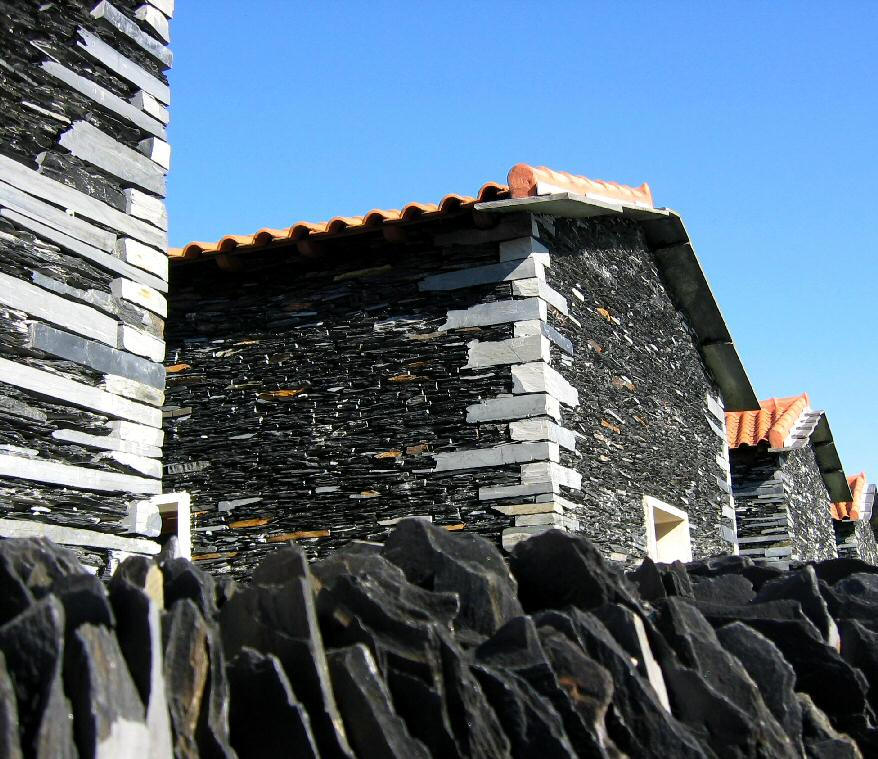
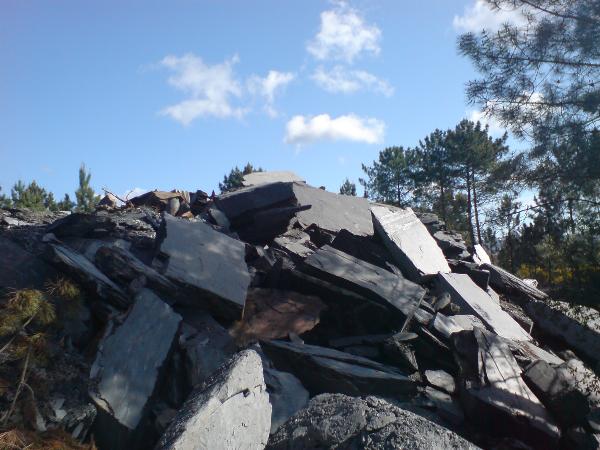
A
special thanks to DanielOliveira who have contributed to this
EarthCache. You can visit his notable EarthCache work in: (visit link)